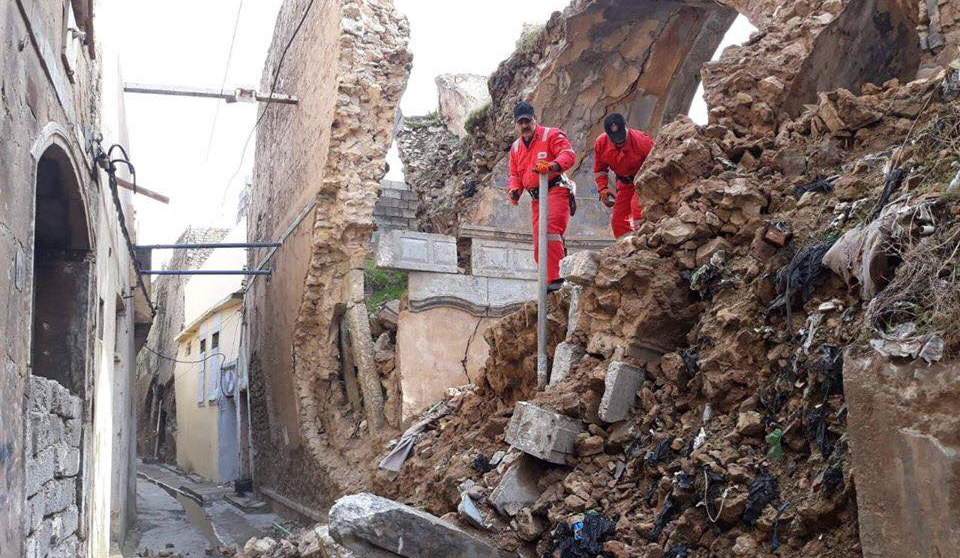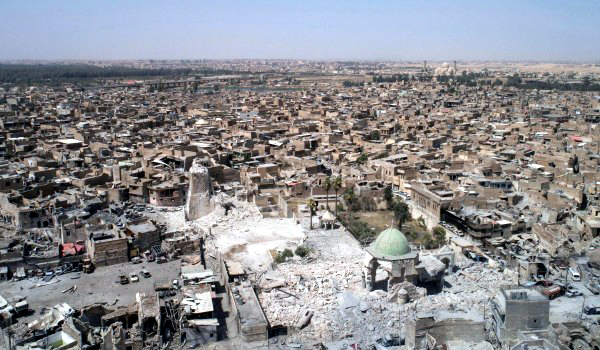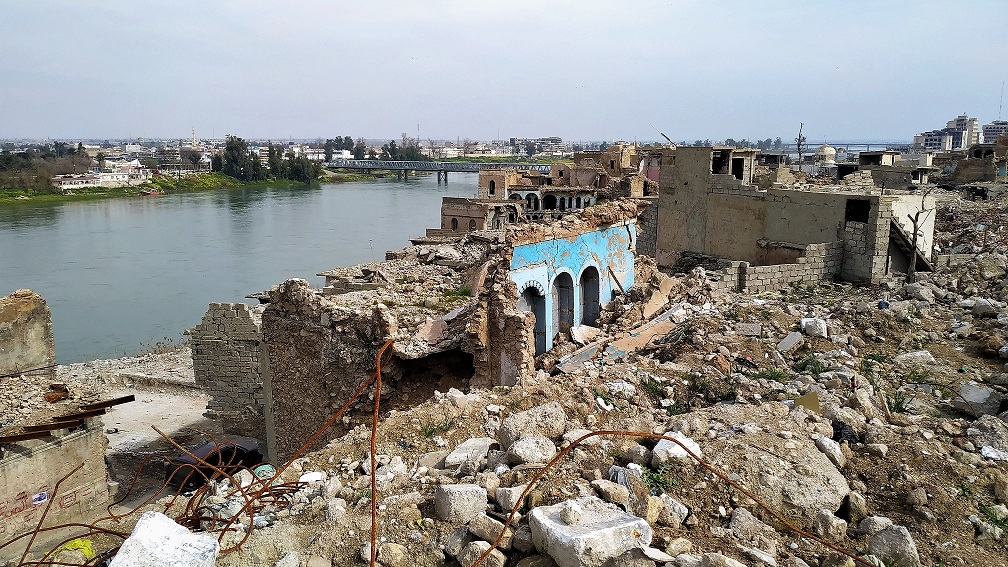Shahwan, Qaliyat, and Maidan, that are considered as the heart of Mosul, are still devastated.
These three neighborhoods in the west of bank of Tigris river have an old and important history.
“The government has asked us to move back to old Mosul without removing rubbles and bodies beneath them,” Abdul Sami Nawaf said.
Nawaf is a resident from the old city of Mosul. His destroyed house is near Tigris river.
“The rubbles of the houses are mixed, architecture of the city is erased,” he said.
Thousands of families are not able to return to old Mosul due to rubbles and lack of reconstructions. Most of them have rented houses in the east bank ofTigris rivers and continue living there.
In old Mosul, there are 365 cultural heritage sites that have existed throughout different eras and civilizations. Al Hadba Minaret and Great Mosque of al-Nuri are two historic sites of the city that were blown up by ISIS.

“We cannot return to our residential buildings because they are full of rubbles and bodies. bodies are daily collected,” Salwan Ahmad said.
Five thousand bodies belonging to civilians and ISIS have been collected since the end of ISIS in the city.
Ahmad continued that, “we are a family of seven persons, due to the fear of diseases and explosive materials, we could not move back and the government has not fulfilled any of its promises to reconstruct the city.”
Old city of Mosul, which was ISIS last foothold in the city, experienced the greatest battle in Mosul Liberation.
“The amount of rubbles and damages are great. Working is risky and even with that we are working to clean off the city from rubbles and later we will set plans for reconstructions,” Nineveh Governor Najim Al Jabouri said.

There are approximately 12 thousand residential houses in old Mosul. According to Nineveh municipality, the scale of destruction is 90 percent which is mostly houses near Tigris river.
“The government should hold the authorities accountable because it has been announced more than a time that old Mosul is free of rubbles and bodies which is not correct.” Alad Idris stated.
Irdis doubted that lack of reconstructions in old Mosul might convince people to give up on their areas that later might be turned into other real estate investments.
Former Nineveh Administration proposed to the people of old Mosul to sell their properties to government so that it would turn it into a tourist resort but majority of people refused the proposition.
Aiman Qarkhuli, an activist and observer of government affairs, thinks that there is an attempt to stop the renovation of old Mosul and instead build a commercial area.
Qarkhuli explains that the war destruction has promoted that idea. “That is why offering compensations and reconstruction projects have suspended.”

The architecture of the houses in old Mosul is ancient, the alleys are narrow that made it difficult to be liberated from ISIS.
Nineveh governor denied such incentive to turn the historic sites of Mosul into other investment projects.
Al Jabouri said, “it is not right that reconstruction is delayed for the sake of investment projects especially in Shahwan, Qaliyat, and Maidan neighborhoods. Tourist resorts and investment projects at the expense of people’s houses will never happen.”
Mosul Liberation offensive left west bank, known as old Mosul, devastated. Lack of reconstructions, service deliveries and stability are barrier to return of thousands of people who live in the east side of the city.





